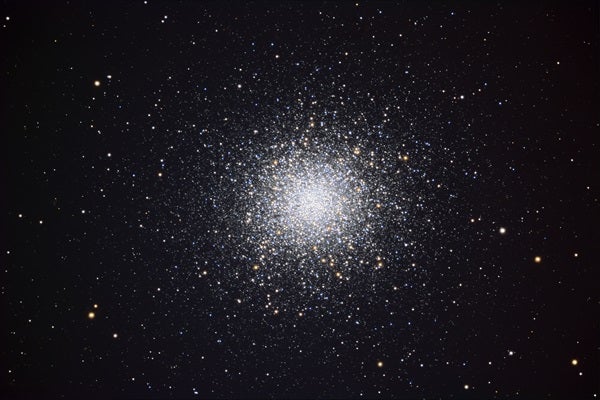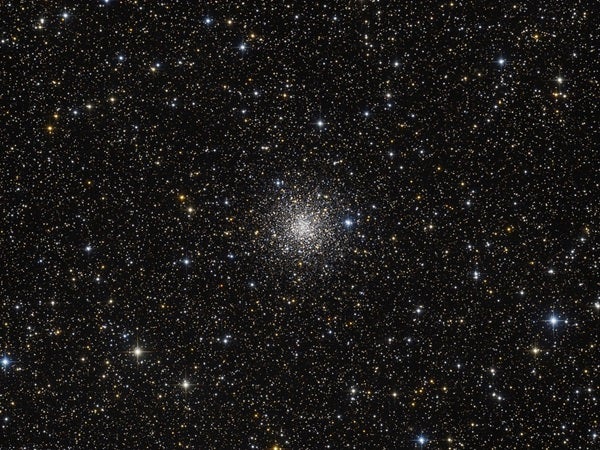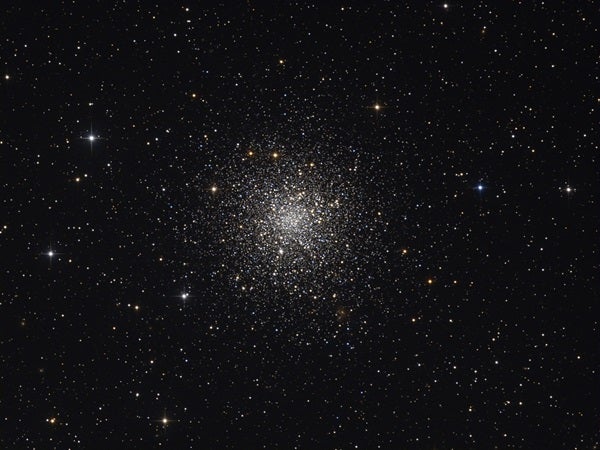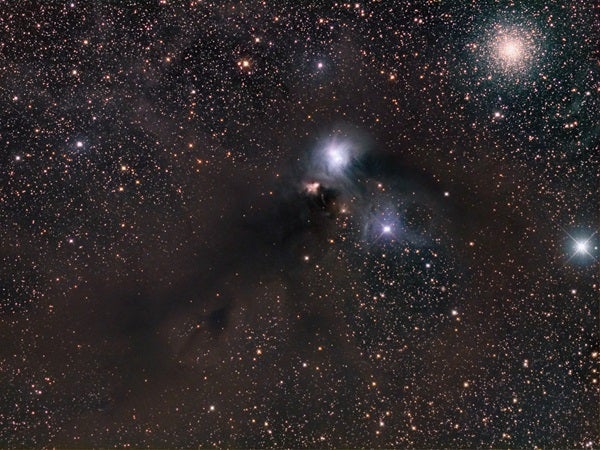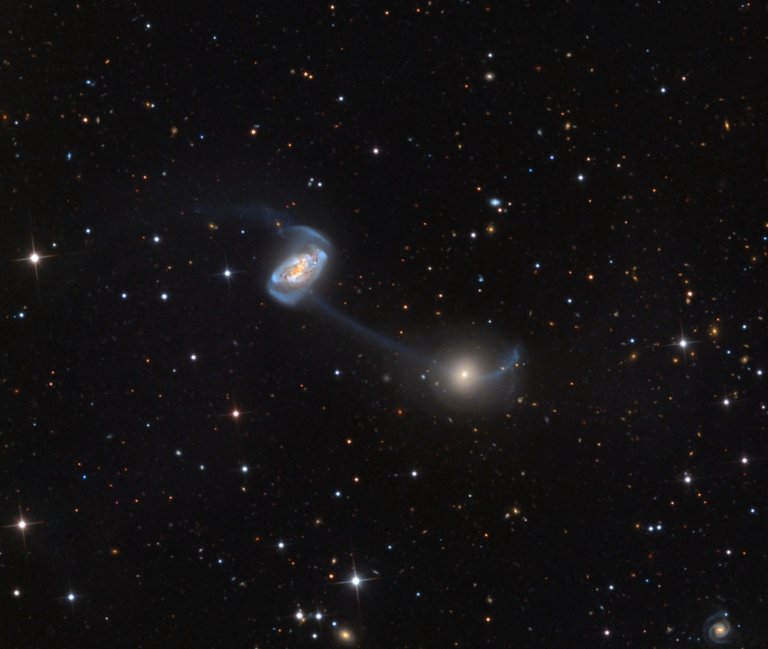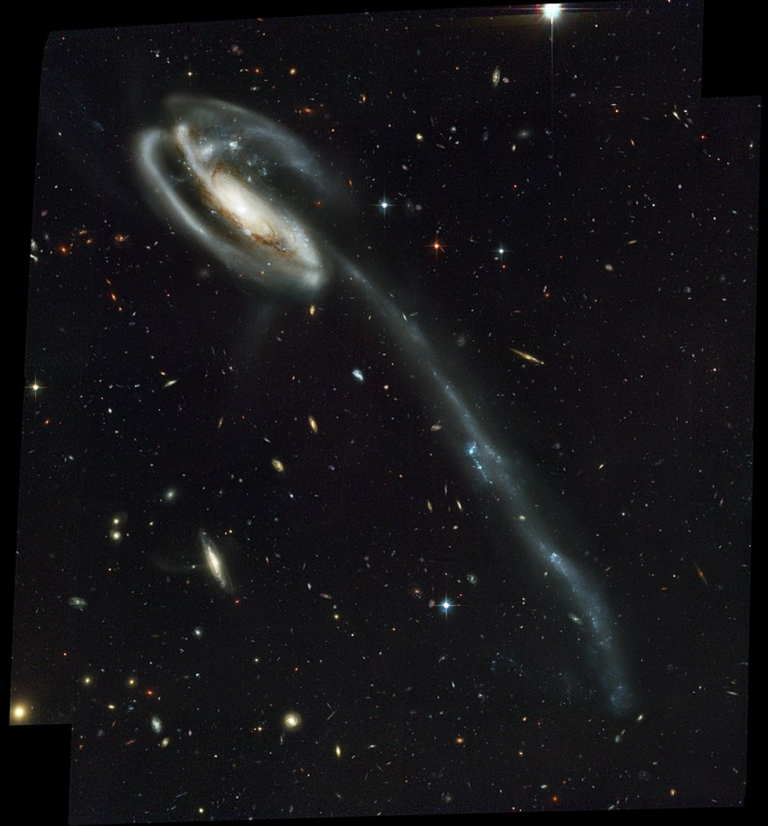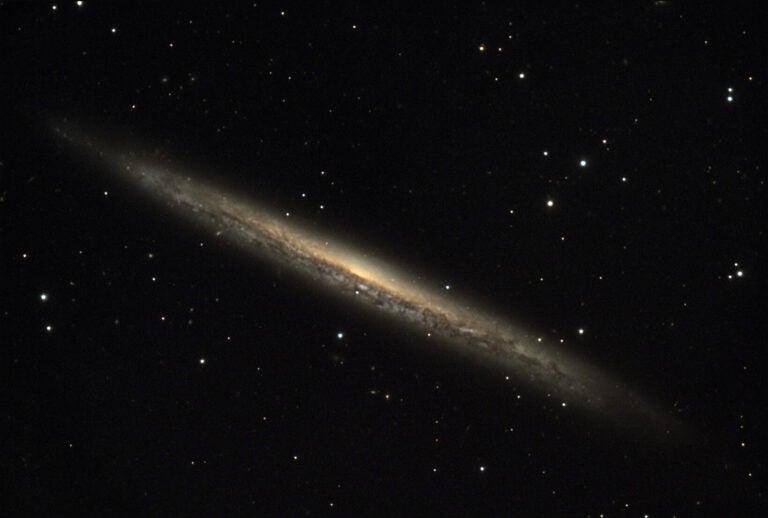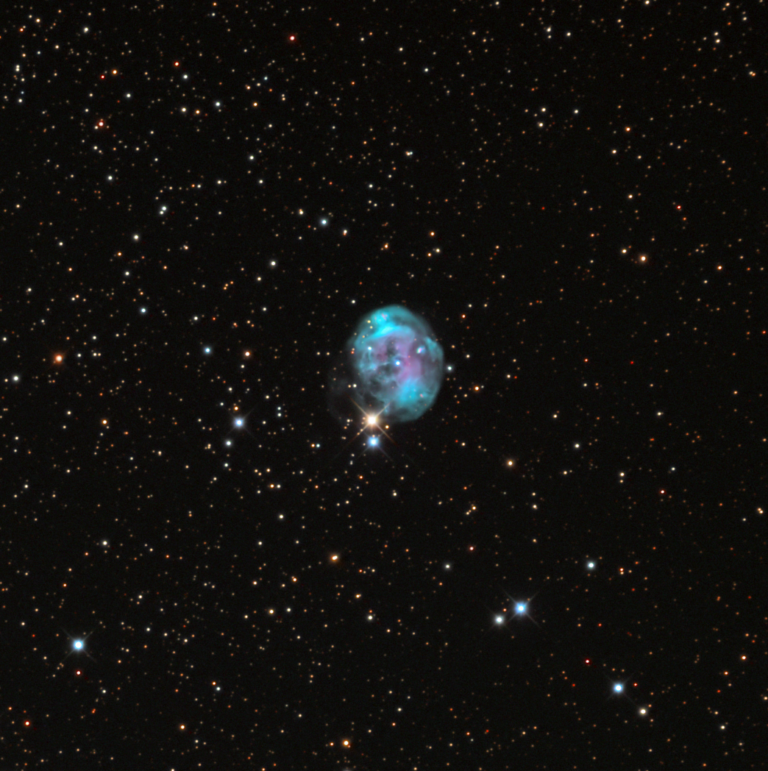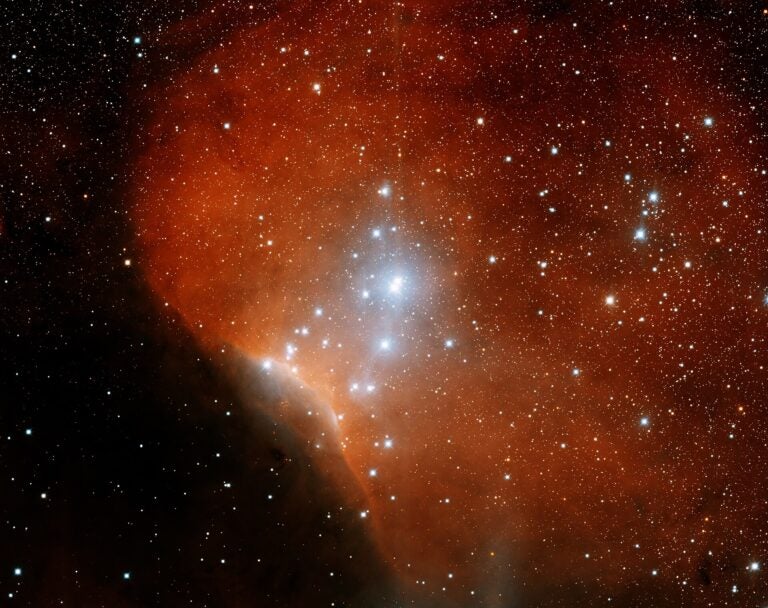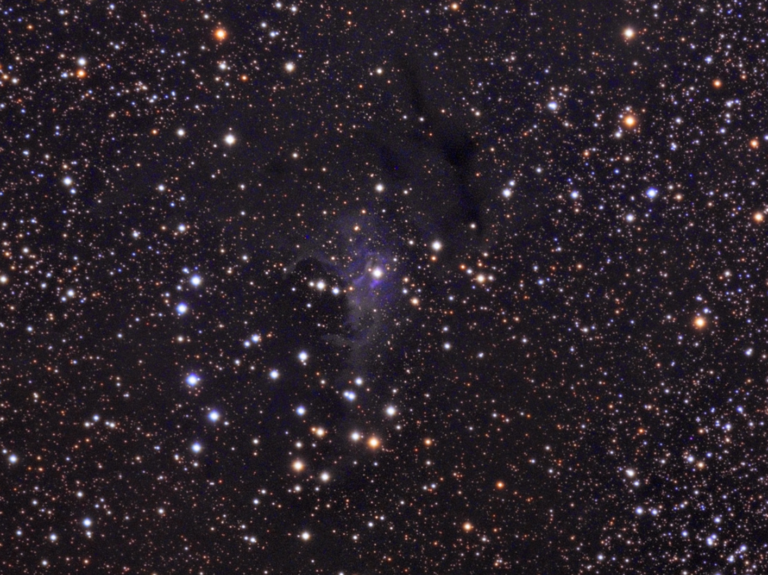But is it? You’ll find out in this August globular cluster showdown.
The rules
First, let’s look at the criteria I used to make my picks. I began by compiling a list of all the Messier (M) and New General Catalogue (NGC) globulars in each constellation visible within roughly 2 hours of right ascension on either side of the meridian in mid-August, and no further south than –45° declination. I then ranked them in order of visual magnitude. But visual magnitude alone is not a good qualifier, so I also factored in the cluster’s horizontal branch (HB) magnitude — the rough magnitude you need to reasonably resolve the cluster — as well the magnitude of its brightest stars. In some cases, the cluster’s apparent size also carried weight.
Judging the visual appearance of globular clusters can become a matter of personal opinion, influenced by factors ranging from telescope size and magnification to one’s imagination or current mood. Perhaps one of the best examples of how difficult it is to determine a clear-cut winner comes from impressions of the two most visually dynamic globular star clusters in the entire night sky: Omega Centauri (NGC 5139) and 47 Tucanae (NGC 104). Let’s compare the two spectacles by the numbers: See Showdown 1 below (in gallery).
On paper, we have a true competition, as both clusters have nearly the same values (including a magnitude 12.5 surface brightness for both). The vote comes down to how the two clusters appear through the telescope — how they make you feel. This is where the competition becomes tricky. Without question, Omega Centauri is a snow globe of glittering starlight. It’s also “open,” with only a moderate concentration of stars in its core. An observer doesn’t have to work hard to resolve the starlight because it’s so spread out. One’s gaze can seemingly rip through its core without difficulty, as if the cluster is laying bare all its secrets.
This is not the case with 47 Tucanae, whose form is the polar opposite. It has a tight (3′-wide) yellowish core that sizzles like an Alka-Seltzer tablet in water. This energetic fizz of countless suns gradually diffuses outward from the cluster’s center into myriad streams of stars in eight prominent spidery arms, superimposed on a web of dimmer suns. I find my eye drawn ever inward by the tight core as if on a treasure hunt. To me, no globular cluster in the sky compares to 47 Tucanae. Others disagree, preferring the open richness of Omega. The thing of it is, there’s no right or wrong choice, just your own personal taste.
I approached the showdown in the following way: First I divided the sky into five regions, each containing up to three constellations. I then progressively compared my visual impressions of the globulars in each constellation and selected a regional winner in the Messier category and also in the NGC category.
Hercules, Lyra, and Cygnus
I began the competition in the high north. While most globulars huddle around the galactic center, the high northern sky boasts some super clusters. The region including Hercules and Lyra contains a total of four Messier and NGC objects, of which three are noteworthy: M13 and M92 in Hercules, and M56 in Lyra. We can dispense with the fourth (NGC 6229 in Hercules) because this tiny (4.5′-wide) cluster cannot compete against the other three. NGC 6229 glows dimly at magnitude 9.4 and has an HB magnitude of 18 — far below a visual observer’s limit through a backyard telescope, so I immediately disqualified it from the NGC competition. (I’ll disqualify many future Messier and NGC objects for similar reasons.)
M13 and M92 are worthy competitors. Both can be spied without optical aid, but at magnitude 5.8, M13 outshines M92 by 0.6 magnitude, meaning that M13 is 74 percent brighter. Although M13 is 6′ larger than M92, both have similar HB magnitudes (15) and their brightest stars shine the same (12). Telescopically, the two are showpieces, with M13 appearing more open (like Omega Centauri) and M92 more compact (like 47 Tucanae). And though I prefer tight globulars to open ones, there’s something magical about M13’s background stars that swarm together to steal the show. M13 simply packs a greater visual punch than M92.
Lyra’s competitor, M56, suffers the fate of being too faint to compare with M13. Shining at magnitude 8.3, the cluster is only half the size of the more diminutive M92. And while its HB magnitude hovers around 16, its brightest stars (13) are easily resolved through moderate-sized scopes. Like M13, M56 is more Omega Centauri-like, but still a pale specter of these dynamos at best.
And what about Cygnus? Is there a globular cluster there worthy of mention? See the sidebar on page 55. Right now, let’s move on to the next, more southerly tier of competitors.
Region 2
Sagitta, Aquila, and Scutum
Like Region 1, Region 2 contains four globular clusters: one in Sagitta (M71), two NGC objects in Aquila (which I immediately disqualified), and one NGC object in Scutum (NGC 6712). Glowing at magnitude 8.4, M71 doesn’t stand a chance against M13, so it too can be disqualified.
NGC 6712, though, holds as a competitor. The other two NGC clusters also shine at 8th magnitude, but their HB magnitudes are magnitude 16 (2½ magnitudes dimmer than M71’s). And both have their brightest stars shining around 13th magnitude (1 magnitude dimmer than M71’s). For your own enjoyment, decide which cluster you prefer, M56 or NGC 6712, because on paper, they are essentially twins.
M13 still holds first position for the Messier objects, while NGC 6712 stands uncontested in the NGC category, for the moment.
Ophiuchus and Serpens
With 21 globular clusters, Ophiuchus has more for this showdown than any other constellation (one more than Sagittarius). Among those, seven are Messier objects: M9, M10, M12, M14, M19, M62, and M107. The rest are NGC clusters. Of the seven Messier objects, four are in the 6th-magnitude range: M10, M12, M19, and M62. All can be seen without optical aid, and all deserve attention.
M10 and M19 are the dimmest (6.6 and 6.8, respectively) of the four. M10 is only slightly larger (20′ compared with 17′), but it’s twice as close, so it is easier to resolve by two magnitudes. So M10 beats out M19 not only on paper, but also through the telescope. Similarly, while M62 shines 0.2 magnitude brighter than M10, its HB magnitude (15.6) does not compare to that of M10 (14.6). Nor do M62’s brightest stars compare to M10’s magnitude 12 suns.
Now let’s compare M10 to M12, which lies roughly at the same distance. M12 is 0.5 magnitude brighter than M10, but M10 is 4′ larger. Their HB magnitudes are the same, as is the magnitude of their brightest stars. We need to turn to the telescope to pick a winner.
In my opinion, through an 8-inch scope, M10 wins hands down. Its core is more concentrated and its stars attractively diverse, stretching out in numerous spiral arms. M12 has a softer appearance, which loses out to the visual dynamics possessed by M10.
Now here’s what’s fascinating: M10’s brightest stars shine as brightly as M13’s. Furthermore, M10’s HB magnitude beats out M13’s by 0.3 magnitude. Through the telescope, I enjoy M10’s structure more than M13’s. But alas, the nearly 1-magnitude difference between them keeps M13 at the top.
Of the 14 NGC globular star cluster in Ophiuchus, none is brighter than 8th magnitude, and while six of them are in the 8th-magnitude class, only one has a magnitude (8.3) and HB magnitude (16.2) equal to NGC 6712’s in Scutum: NGC 6293. And although their size difference is only 2′, NGC 6293’s brightest stars are a full magnitude fainter than NGC 6712’s. So the visual comparison is undeniably in favor of NGC 6712, which thus far remains on top of the NGC globular clusters in this survey.
Serpens has three globular star clusters: one Messier object (M5) and two NGC objects — NGC 6535 and NGC 6539, which we can immediately discount. M5, however, is a marvel to behold. To compare it to M13, see Showdown 2 below.
As with Omega Cen and 47 Tuc, the clusters have similar visual characteristics. Furthermore, the two lie at similar distances from Earth. So we must turn to our telescope to decide which we prefer. And that’s where we see a difference: M5’s core is more compact (like 47 Tuc’s) and M13 is more open.
I also see more color in M5 (a straw-yellow interior and pale blue exterior) while I detect color only in M13’s diffuse inner region (pale blood red). M5’s core excites me. With a bit of imagination, it seems to be collapsing before my eyes with nervous stellar energy that electrifies my thoughts. Visually, through an 8-inch telescope, M5 gets my vote.
So I replace M13 with M5 as the winner (thus far) in the Messier competition, while NGC 6712 in Scutum remains uncontested in the NGC class. Will they hold on to first place.
Scorpius, Libra, and Lupus
Scorpius has two Messier (M4 and M80) and seven NGC objects. Of the Messier objects, only M4 stands a chance of competing. The nearest globular cluster in the Messier and NGC catalogues, M4 shines brightly at magnitude 5.4 and is visible with unaided eyes. How does it compare to M5? See Showdown 3 below.
Looking solely at the data, M4 outperforms M5 in every category. This isn’t surprising, considering M4 is 17,000 light-years closer. It would seem that M4 has the upper hand. So, why don’t we sing the praises of M4?
It may come down to perception. We perceive globular clusters as compact spheres of swarming stars, many difficult to resolve. M4 does not fit that perception. It’s so close that a telescope resolves it extremely well. It’s open and incredibly detailed — so much so that it looks more like a rich open star cluster than a globular, which is why, with some reluctance, I will keep M5 at the top of my list.
Scorpius does not have any NGC clusters that would compete with NGC 6712. Not only are they all at least a magnitude fainter, but their HB magnitudes range between 16.3 and 19.5. Visual magnitude aside, the same argument applies to remaining two clusters in this region: magnitude 7.6 NGC 5986 in Lupus, and magnitude 8.4 NGC 5897 in Libra, sometimes called the Ghost Globular. As beautiful as these two clusters are, NGC 6712 remains on the top of my NGC category list.
Sagittarius, Capricornus, and Corona Australis
We now come to the end of our showdown. As it stands, I’ve placed M5 and NGC 6712 at the top of their respective lists. How will they stand up to the remaining competitors?
Sagittarius has 20 globular clusters in our list, including six Messier objects: M22, M28, M54, M55, M69, and M70. Of these, only M22 and M55 are naked-eye objects and contenders for the competition. We’ll start with M55 — one of the most southerly clusters observed by Messier and what I consider the most underrated globular cluster in the night sky. How does M55 compare to M5? See Showdown 4 above.
Although M5 outshines M55 by only 0.6 magnitude, M55’s HB magnitude is 0.7 magnitude greater, and its stars are more easily resolved. Furthermore, the brightest stars in M55 outshine those in M5 by a full magnitude. The main thing working against M55 is its low southerly location for mid-northern observers. So, while it might be a winner in some categories, it’s missing that little bit of brightness oomph to put it on top. So, M5 stays in first place.
As great as M5 looks, it pales in comparison to M22. At magnitude 5.2, it is the brightest globular cluster we’ve encountered so far, outshining M5 by 0.5 magnitude and M13 by 0.6 magnitude. See the statistics in Showdown 5 below.
On paper, M22 stands far above the rest. But what about through the telescope? Ah, here we have the Omega Cen vs. 47 Tuc situation again. And I admit that to this day I seesaw between which is my favorite: M5 (the more compact 47 Tuc type), or M22 (the more open Omega Cen type). Nevertheless, I surprise myself by selecting the more open M22 (my bonfire of a half-million suns) over M5.
Only one Sagittarius NGC cluster can compete against NGC 6712: NGC 6723, and it is the clear winner. At magnitude 6.8, not only is it 1.3 magnitudes brighter, but its HB magnitude (15.5) is also nearly a magnitude greater, as are its brightest stars (12.8). It is clearly one of the finest NGC clusters in the sky, but is it the best?
Just over the border in Corona Australis lies NGC 6541. I call it the M55 of NGC globulars because it’s also overlooked. At magnitude 6.3, NGC 6541 is half a magnitude brighter than NGC 6723 and its brightest stars nearly a full magnitude greater. Yet, once again, it may come down to whether you prefer a slightly brighter and more open display (NGC 6723) or a highly compact core (NGC 6541). In fact, NGC 6541 is one of the most compact globulars known and telescopically, is the site of much visual chaos. Holding up my card, I give NGC 6541 the higher score and place it at the top of my list.
So, we come to a photo finish in each category, with M22 nosing out M5 to win the race. And in the NGC category, NGC 6721 in Scutum was fantastically outperformed first by NGC 6723 in Sagittarius, which was in turn edged out by NGC 6541 in Coronae Australis at the finish line to win the race.
I hope you enjoyed the list. Remember, these final results are my preferences. As you peruse the clusters through your telescope, keep in mind that there is no right answer, only your personal taste, so create a list of your own favorites and rank them. Good luck.

